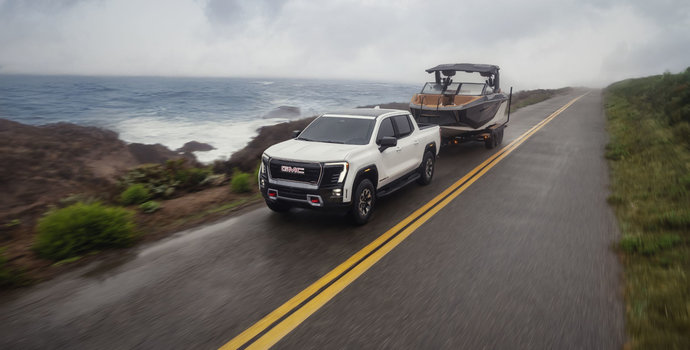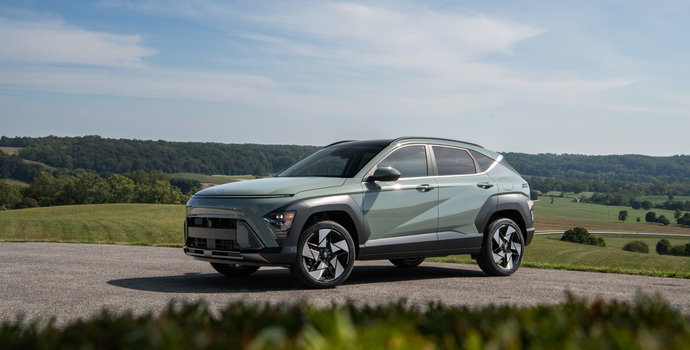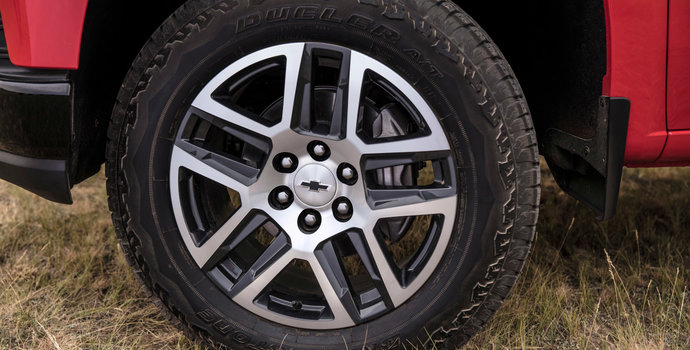Step 1: Preparation
Before you start looking for used vehicles that are for sale, you should do some preparation that will make the rest of the process much easier.
1.1 Pick Your Ideal Vehicle
In general, you should figure out what your needs are when shopping for a vehicle. Someone who lives and works in downtown Toronto might want a small hybrid that has great fuel economy and can maneuver and park easily. Meanwhile, someone who lives in Mississauga or Barrie and goes on weekend fishing trips might prefer a crossover SUV to fit their gear and deal with bumpy country roads, and construction workers everywhere usually need a pick—up truck.
1.2 Set Your Budget
First, sit down and set your budget. This includes the maximum amount you think you can afford to spend on purchasing the car as well as all the other payments and costs associated with owning your car. Remember to factor in taxes (HST), licensing fees, and license plates. Some people think the general rule is that you should not be spending more than 10-15% of your annual income on your vehicle. There are other costs to consider that will only be a factor once you actually own the vehicle:
- Depreciation — depreciation of a vehicle refers to the value that is lost over a period of time. For example, new vehicles lose 20-30% of their original value within the first year and on average 20% every year after that.
- Fuel Economy — if you’re shopping for a used car in Toronto fuel efficiency can save or cost you a lot of money in the long run.
- Insurance — payments will vary according to the vehicle you drive, your driving history, age and gender, location and how often you drive.
- Repair & Maintenance — some vehicles are more reliable and require fewer repairs. Tip: be prepared to set aside 3-5% of your vehicle’s purchase price for routine maintenance and repairs.
When you’re setting your budget on how much you want to spend on a used car, make sure to keep these additional costs in mind and not just the cost to purchase it.
Did You Know?
The average annual payment for car insurance in Ontario in 2023 is around $1,400. However, there are several factors that affect your monthly rate such as your driving record, claims history, age, gender, location, and year and model of your vehicle. For example, keep your driving record clean will lower you.
Step 2: Research
This step is optional. If you know your budget and just want to start looking at what is available in your price range then you can skip to Step 3 below.
Now you can start doing some research to find out what used cars satisfy your criteria. There are a number of things to look for in a vehicle that will make sure you find a used car you like and that you can afford.
You can look up websites to find detailed breakdowns and comparisons of every vehicle being sold so you can see which ones fit your criteria. In addition, you can see how reliable specific vehicles are, how expensive they are to fix, and things like depreciation to get an idea of its cost—to—own. Some of the best websites with these resources are:
Using these reviews, ratings, and comparisons you can make a good list of vehicles to target that suit your needs and fit in your budget.
Step 3: Search
Now you can start searching ads and listings to see what is for sale in your area. There are a number of different ways to search for used vehicles, and each of them have their own benefits and drawbacks.
3.1 Know Where to Search
You can look for used cars that are for sale in resources such as these:
- 3rd Party Websites — websites like Kijiji and AutoTrader or social media sites like Facebook Marketplace that show used vehicles for sale in your area from private sellers and dealerships
- Print Listings and Ads — magazines, newspapers, classifieds, and other
- Car Dealerships — check out a used car dealer’s website or even go to their physical lot to see what they have available
Each of these have their own advantages. 3rd party sites show more vehicles, but the cars they list from dealerships may not include all the information or be up to date.
3.2 Decide Between Private vs Dealership
If you want to know what the difference is between buying from a private seller or from a car dealership, there are pros and cons for each that you should keep in mind.
Condition
- Private seller — used vehicle comes “as is” so any issues that exist when you buy it are your responsibility
- Dealership — used vehicles are usually cleaned and fixed up before being sold
Reliability
- Private seller — more likely to encounter scams from private sellers and does not come with any warranty
- Dealership — cannot afford to be dishonest due to legal and industry regulations
Choice
- Private seller — usually only have the one car to sell
- Dealership — will have multiple on their lot to examine and choose from
Certified Pre—Owned
- Private seller — does not sell these vehicles
- Dealership — used vehicles that have been fully certified through a detailed safety and inspection process
CarProof
- Private seller — does not have them
- Dealership — can provide a detailed and independent report with vehicle history information
So in general, a privately sold car might be a bit less expensive but they are less flexible in their selection and purchasing options and you as the buyer take on far greater risk.
Example!
Let’s say the average distance driven by Canadian drivers is 20,000 kms, with gas prices in Ontario at $1.75/L in 2022. If you buy a car that has a fuel efficiency rating of 8.0L/100 km vs one with 10.0 L/100 km , you save more than $3,500 over 5 years. Even a small difference in fuel efficiency can save you a lot of money in the long run!
Step 4: Inspection
Once you’ve found a vehicle in your search that fits your needs and your budget, you can contact the seller and arrange to see it in person. This is your chance to talk to the seller or salesperson and ask salesman more questions about the vehicle, see its history and important documents, and make sure that you’re not getting ripped off.
4.1 Inspection and Test Drive
Give the vehicle a thorough visual inspection of the exterior, interior and engine to see if there are any signs of damage. If everything looks okay, ask to take it for a test drive to make sure that it feels comfortable and operates smoothly. If they do not let you inspect the car or take it for a test drive, consider that a red flag and that they’re not being honest with you.
4.2 Assess the Documents
Ask to see the proper documentation for the vehicle to make sure everything is legitimate. These should include the following:
The UVIP is absolutely necessary, as it contains all the relevant paperwork to be filled out and signed in order to transfer legal ownership. The other two are not legally necessary, but without them there is far more risk and uncertainty for you as the buyer. Make sure you insist that they are done before you purchase the vehicle.
Step 5: Purchasing
If you are satisfied with the condition and documentation of the vehicle after inspection, you can begin the process to purchase it from the seller. This involves negotiating and paying an agreed upon price (and any payments), and making sure the proper paperwork is filled out and transferred.
5.1 Negotiate with the Seller
Use the research you found earlier on the pricing for the same make, model, year and condition of the vehicle. If the seller is asking for more, use your research of the market value and ask them to come down in their asking price. If they refuse, be ready to walk away. While negotiating, you can have a separate negotiation for each of the following:
- Selling Price — vehicles are priced competitively based on different factors including pricing guides on the internet which doesn’t leave much room for negotiation
- Trade-In Value — you can sell your old vehicle to the dealer and use its value towards buying the new vehicle
- Down Payment — the amount of money you initially pay, if you are paying on credit through lease or finance
- Monthly Payment — the amount you pay per month after down payment, if you are paying with a lease or finance
The last two points are mostly relevant if you are buying a used vehicle from a dealership, as it is very difficult to get a lease or finance when buying from a private seller.
5.2 Decide on Payment Options
There are a number of different methods you can use to pay for the vehicle, each with their own benefits and drawbacks.
- Financing — getting a loan from a bank or the car dealership allows you to pay it off over time but comes with long term financial commitment
- Leasing — very difficult to get for used cars, especially for new immigrants to Canadians with little to no credit history
- Buying It Outright — have to pay full asking price all at once but saves you money in the long run
When buying from a private seller you usually have to buy it outright. One of the benefits of buying from a dealership is flexible payment options. You can read more about each payment option in our guide to leasing and financing cars here.
5.3 Fill Out Paperwork
Once the final price and payment method have been chosen, there is some final paperwork to fill out and documents to exchange.
- UVIP — the seller must give you the package after the sale has been completed
- Vehicle Permit — part of the Application for Transfer in the UVIP that the seller and buyer must sign
- Bill of Sale — seller must fill out their name with a signature, the date of purchase, and the selling price
Full legal ownership of the vehicle transfers to the buyer once the ownership is signed.
Useful Tip!
If you trade in an old vehicle to a dealer when also buying a car from them, you save a large amount in taxes. This is because the value of the trade-in is taken off of the selling price of the car you’re buying, so it reduces the total amount in taxes added on to the purchase.
Step 6: Registration
Once you buy your vehicle from the seller you are not yet finished, as there are some final steps you need to take to finalize your legal ownership. This includes registering the vehicle with the government and getting it insured. If you are buying from a dealership they will provide most of the forms and offer to do some of the work for you, for a fee. If you buy from a private seller you will most likely have to do much more yourself.
6.1 Insurance
Before you can fully register your vehicle with the government, you must have proof of insurance. What company you choose and how much you pay will vary, but there are certain things you must do in order to be valid in Ontario:
- Insurance must come from a company that is licensed by the province
- Must carry liability insurance card in your vehicle while driving it
- Your policy must include third—party liability for $200,000 in case the driver causes injury or death
The rest of what is included in your policy is up to you to negotiate with the company. You can find out more about that process in our guide to getting car insurance.
6.2 Register Ownership
First, you’ll need to register the vehicle with the Ontario government — specifically, with the Ministry of Transportation (MTO). To do so, you will need the following:
- Safety Test Certificates — if the seller did not provide them then you will have to pay to have them done
- Driver’s License — should have a valid Ontario driver’s license already
- Completed UVIP Forms — see step 4.2
- Proof of Purchase — receipt from the purchase or Bill of Sale from the UVIP
- Original Vehicle Permit — should receive this from the seller
If you need or want to do the registration yourself, you can do so at one of the ServiceOntario office locations in the province.
6.3 Get License Plate & Sticker
To drive your vehicle in Ontario, the vehicle must have valid license plates and be insured. There are some important details that you will need to know:
- You will need two license plates on the front and back of the vehicle
- Plates are valid to the owner and not the vehicle, so you will have to get your own set after the purchase
- Licence plates must be renewed every one or two years and usually expire on your birthday
- You will no longer receive a physical sticker or have to pay a license plate renewal fee.
- You can renew your license plate online by visiting the Ontario license renewal website or in person. There is no fee associated with the renewal process.
Did You Know?
You can pay extra to have your Ontario license plate personalized with an assortment of letters, numbers, and even one of 60 graphics. The only other restriction is that you can’t have a configuration that someone else already has registered.
Step 7: Drive!
You have the car you wanted, you paid a reasonable amount for it, and you have full legal ownership to use it. All that’s left for you to do is enjoy your vehicle after all the work you put in, and thankfully there are lots of great roads and scenery to enjoy in Ontario.
You might also be interested in these guides:
How to Buy a New Car in Ontario?
How to Test Drive a Car?
How to Buy a Car in Ontario as an Immigrant
How to Lease or Finance a Car?







